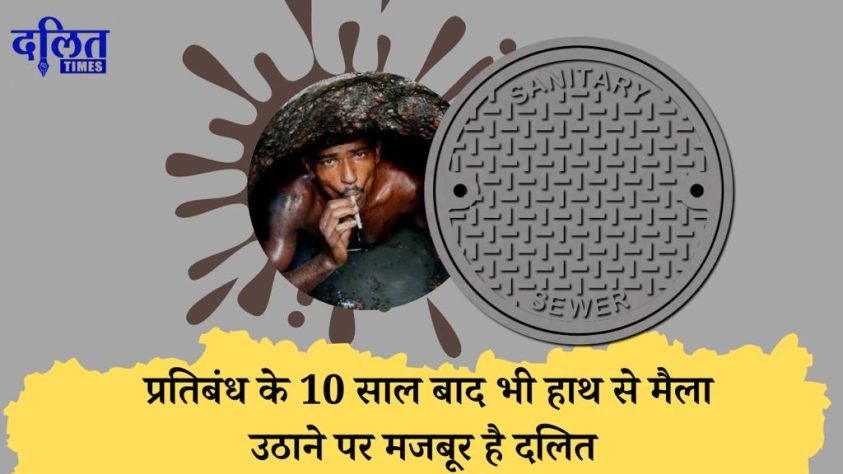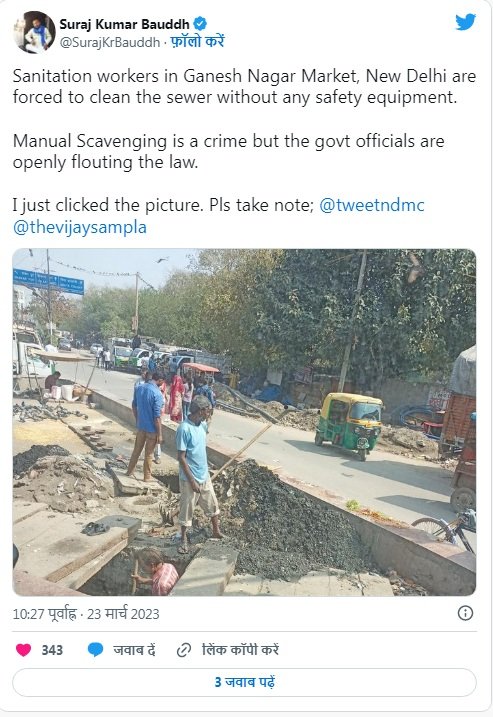Delhi: Dalits still forced to do manual scavenging even after 10 years of ban

Author Raksha Rawat
A few years ago a claim was made by the Delhi government. It was claimed that there is not a single manual scavenger in Delhi. That’s why there is no specific program for the rehabilitation of such people. For which the Arvind Kejriwal government, taking up the task of cleaning sewage three years ago, had also bought 200 machines for cleaning. The cost of each machine was 40 lakhs…..
but even today the situation is as it is, this practice of manual scavenging continues. In the year 2013, the Supreme Court of India had also issued a directive for this, according to which the practice of manual scavenging was abolished with great fanfare. Or should we say that it was abolished on paper. Along with this, the states were also instructed to do the same.

More than 50 deaths in 5 years
But there has always been a huge gap between the making of laws and their implementation. Which can be clearly seen from the figures of deaths due to manual scavenging in the last 5 years in Delhi. According to a report by News Laundry, more than 50 manual scavengers have died in the last 5 year
sewer cleaning without safety equipment
A fresh case has come to the fore from Ganesh Nagar. Which tells what is the place of poor and laborers in the claims and actions of the government? How important is their safety to the administration? On March 23, sanitation workers of New Delhi’s Ganesh Nagar market were made to clean sewers without any safety equipment.

The question is, why has nothing changed even after 10 years of the proposal? After all, what did the capital do to end this practice?
Total 971 deaths since 1993
A full 10 years have passed since the “ban” on manual scavenging in India. But even today many people lose their lives while carrying manual scavenging. The central government accepts deaths due to manual scavenging only in cases of latrines. The meaning is clear that if there is no counting then from where will the problem be seen. The extent has been reached when last year the government said that since 1993, there has not been a single death due to manual scavenging in India, but the truth is something else. According to a report by News Laundry, a total of 971 people lost their lives since 1993.
First no. UP on
According to the report, Uttar Pradesh is on the first number, Tamil Nadu is on the second and then the capital city of Delhi on the third number of deaths “during cleaning of sewers and septic tanks”.
The reason for this is the absence of a well-planned waste management system in the capital. There is a problem which has become complicated due to the negligence of the government agencies. Every year drains get jammed and sewer lines start overflowing.
90 percent people from Dalit community
Let’s try to know who are these people who are forced to do this work even after 10 years have passed since the resolution was passed? There are about 30,000 sanitation workers in Delhi, who clean sewers, septic tanks, public toilets and other things. According to officials, 90 percent of these people come from the Valmiki community, which is a Dalit sub-caste. And due to lack of development and social exploitation, he is forced to do manual scavenging.
After all, how long will the administration keep telling the development of the country just on paper?
Note: The figures used in the article are taken from a report by new laundry.



